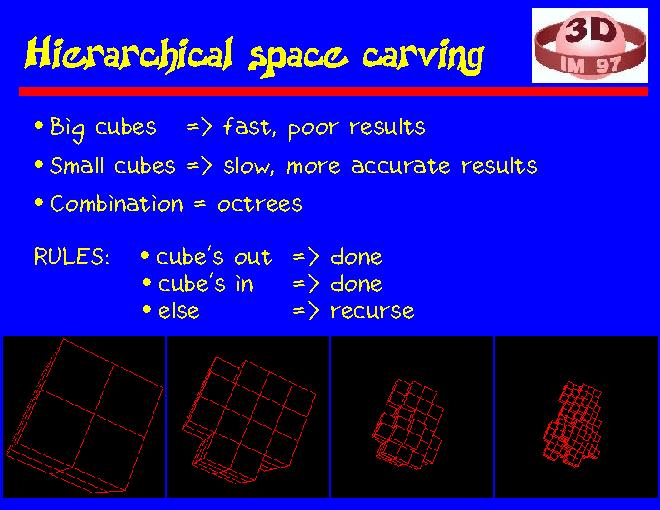Click slide for next, or goto previous, first, last slides or back to thumbnail layout.

Click slide for next, or goto previous, or back to thumbnail layout.
Click slide for next, or goto previous, first, last slides or back to thumbnail layout.

Click slide for next, or goto previous, or back to thumbnail layout.
If we only use large cubes, we cannot hope to be able to model the object accurately. Using small cubes gives much better results, but requires much more work. However, if we take a hierarchical approach using octrees, we can quickly rule out large chunks of space and automatically concentrate our efforts close to the surface.
We start with a large cube surrounding the data. Since by definition it intersects the data, we immediately subdivide it into eight smaller cubes, and try to label. If the label is out, we ignore the cube. If it is labeled inside, we mark the cube so, but do not process it further. If we can't label a cube to be inside or outside, we subdivide it into eight smaller cubes, and apply the tests recursively for them.
The pictures in this slide illustrate the method. We first start with eight large cubes, each of which intersect the data. At the next level, a number of cubes are discarded. Two more levels down and more than 80% of the volume has been carved away.